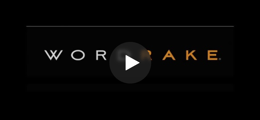As advocates continue to promote the benefits of communicating clearly, questions still arise about how to define plain language. What is plain language, and how do you know if your choices are plain enough? After defining plain language, I’d like to investigate whether jargon and technical language are compatible with plain language.
Continue readingWe talk about plain language a lot here at WordRake, and for good reason. Our software is specifically designed to make it easier to follow plain language laws. But what are plain language laws exactly? The nation’s leading expert, Professor Michael Blasie, agreed to give us a crash course in this important legislation.
Continue readingIt’s one thing to want to communicate clearly, but knowing how to do it is a different matter. The International Organization for Standardization (ISO) made it easier last month by releasing Plain Language standards. These standards supply a framework for governments and private entities to make their publications more accessible.
Continue readingWhen you’re writing for work, it can be tempting to show off. Big words and elaborate details make us feel confident, certain that they make us seem smart and impressive. In reality, overly complex writing can make your work hard to understand, or worse, too much of a bother to read. Author and writing teacher Erin Lebacqz investigates what can go wrong when we write for ego rather than expression, and how to keep our words simple and clear.
Continue readingWho must comply with plain language laws? Nearly everyone in business. According to Professor Michael Blasie, the leading expert on plain language laws, in addition to the federal government’s plain language laws, every state in the United States and Washington DC have plain language laws too. In an earlier article, we discussed federal plain language requirements; this article focuses on state laws that determine how private actors must write.
Continue readingTerminology note: I’ll use the term “patients” to refer to people who have direct lived experience with a health condition and who receive services from the healthcare system. Different people may prefer different terms—like client, service user, and self-advocate, among others—depending on context.
Continue readingTerminology note: I’ll use the term “patients” to refer to people who have direct lived experience with a health condition and who receive services from the healthcare system. Different people may prefer different terms—like client, service user, and self-advocate, among others—depending on context.
Continue readingTerminology note: I’ll use the term “patients” to refer to people who have direct lived experience with a health condition and who receive services from the healthcare system. Different people may prefer different terms—like client, service user, and self-advocate, among others—depending on context.
Continue readingTerminology note: I’ll use the term “patients” to refer to people who have direct lived experience with a health condition and who receive services from the healthcare system. Different people may prefer different terms—like client, service user, and self-advocate, among others—depending on context.
Continue readingI was in Boise, Idaho yesterday and you know how conservative that state can be and we went out for a walk to get a coffee and it was a cold day and within a quarter hour I must have seen 15 people with face piercings and green hair.
Confused? You’re not alone. The paragraph above is a mess. The language is straightforward, there aren’t any very long words, it’s written in the first person and it’s chatty. These are all hallmarks of writing in plain English, but… Did you understand it at first reading? Very unlikely. Apart from being badly punctuated, little thought has gone into how the information is presented. If ideas are jumbled and illogical, you’re in trouble.
Continue reading













